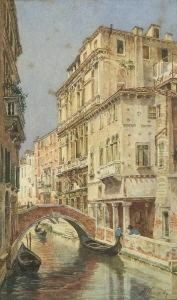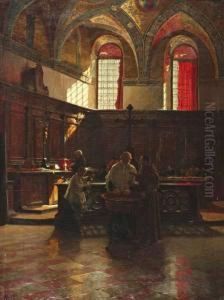Richard Von Hagn Paintings
Richard von Hagn was a German painter, primarily known for his landscape paintings, which were characteristic of the late 19th and early 20th-century styles. Born in 1862 in Dresden, Germany, von Hagn grew up during a time of significant change in the art world. He was part of a generation that bridged the gap between traditional academic painting and the burgeoning modernist movements.
Von Hagn studied at the Dresden Academy of Fine Arts, where he was influenced by the works of the old masters as well as by his contemporaries. His education at this prestigious institution provided him with a solid foundation in technical skills and an understanding of the importance of light and color in painting. Von Hagn's early works often depicted scenes from the Saxon countryside, showcasing his deep appreciation for the natural world.
Throughout his career, von Hagn traveled extensively throughout Europe, which allowed him to experience different landscapes and artistic environments. These journeys exposed him to various styles and techniques, and his work began to reflect a combination of traditional realism with elements of Impressionism. He was particularly adept at capturing the changing qualities of light and atmosphere, which brought a sense of life and movement to his landscapes.
Despite having a relatively quiet life compared to some of his more flamboyant contemporaries, von Hagn was well respected in his field. His artwork was exhibited in numerous galleries and was collected by art aficionados of the time. Although Richard von Hagn may not be as widely recognized today as some of his peers, his contributions to the field of landscape painting are still appreciated by those who study the period.
Von Hagn continued to paint well into his later years, and he remained active in the art community until his death in 1933. His work is part of several collections in Germany and can be seen in various museums and galleries that specialize in 19th and early 20th-century European art. Richard von Hagn left behind a body of work that continues to be studied and enjoyed for its serene beauty and technical proficiency.

